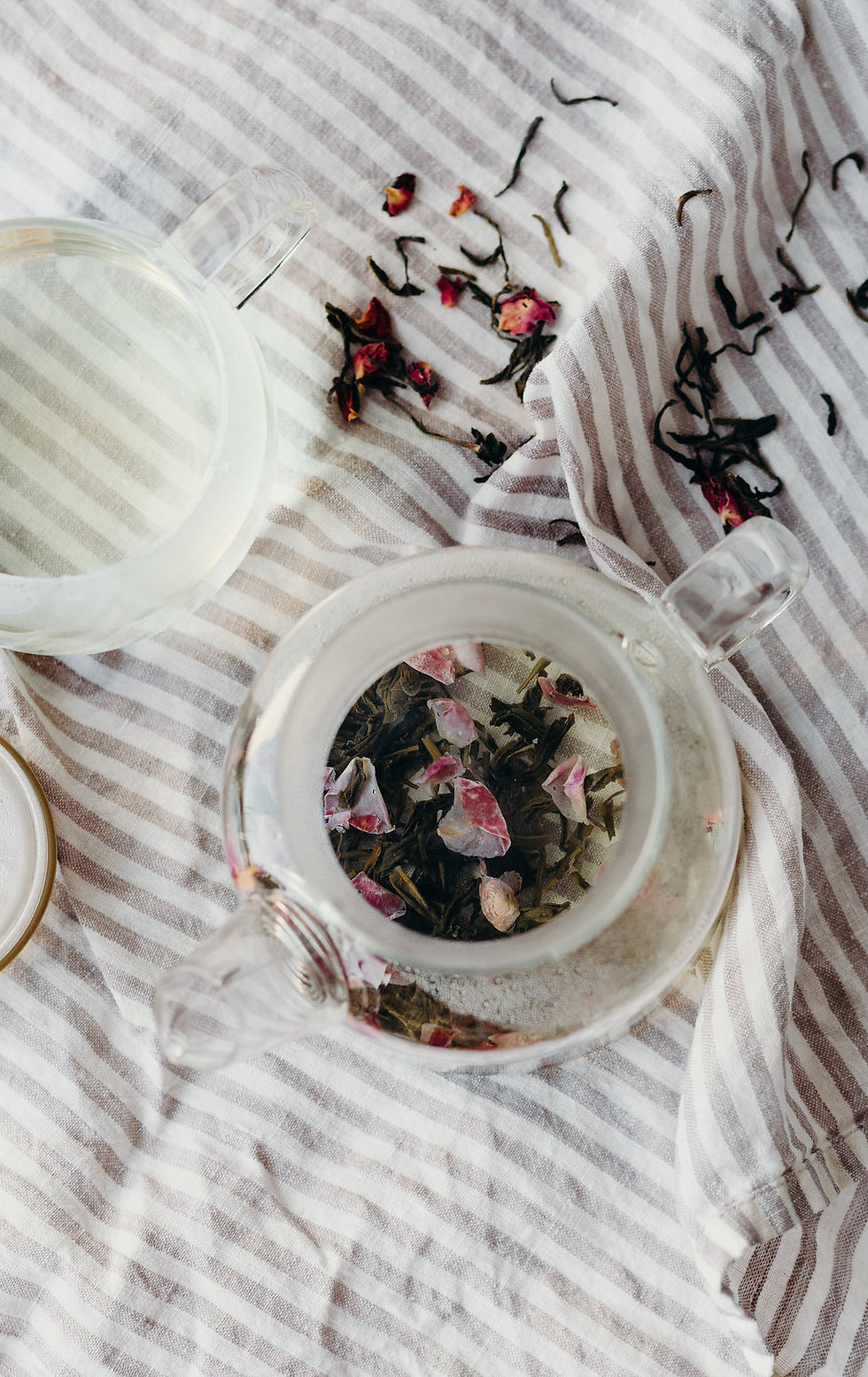Pure and simple
- Sarah
- Jul 17, 2017
- 3 min read
When tea was first discovered it was prepared as a medicine and it was a long time before it actually became thought of as an everyday beverage. Today we naturally think of tea as this abundantly healthy kitchen staple, but thats not actually always the case...

We go out of our way to bring you safe, healthful and delicious tea. Here are some really simple tips on how you can ensure your cup is free from any unnecessary nasties;
Pure
Tea plants are under pressure to keep producing fresh leaves and chemicals can be used heavily to both suppress pests and promote growth. Chemical residues in tea, herbs, spices and flowers commonly used in tea blends can stay on the leaf from the field, through processing and when they are water soluble they can ultimately end up infused into your cup.
A 2012 study of tea produced in China found 100% of samples contained at least 3 pesticide residues with some containing more than 10 different pesticides. Of the samples, well over 50% were found to have traces of harmful banned pesticides. Other studies have found that when tea's contain traces of pesticides, the negative health consequences will outweigh the many benefits associated with drinking tea.
Tea and herbs typically have a long, complicated and often faceless supply chain so organic certification is the best and only way to ensure that it is genuinely organic and chemical free.
Unprocessed
Our ethos is that good quality natural ingredients that are produced with love and consumed fresh taste great. Think fresh new season asparagus in spring time. No need to add artificial flavouring, right? Tea much like many food and beverages has become industrialised - which means the industry has tried to produce more tea, faster and cheaper. Mass produced teas are essentially made so quickly that they don't have the time to develop full flavour - hence the need for artificial and natural flavouring which also happen to be cheap and abundant. More on flavouring here, but what it comes down to is that neither artificial nor natural flavours are great- or very natural. The really happy news is that there are still lots of wonderful, hard working and talented tea makers taking the time to craft tea the real way.
Our tips here are read the ingredients- you might be surprised! Trust mother nature- left to do her thing she gets it right. Know where your tea comes from- just like good wine or chocolate knowing the provenance and maker made is key to ensuring your tea is authentic.
"It seems the only way to know what’s in your food {and drink} for sure is to cook from scratch with basic ingredients and trust the O.G. flavorist, Mother Nature, to make it taste good".
Simple
We adore starting our day with the ritual of brewing loose leaf tea and wouldn't have it any other way. Although convenient, there are a couple of drawbacks with teabags that its really good to know about….here's the deal. It's thought that most standard teabags are actually only 70-80% biodegradable. This is because the rest of the teabag is made of a plastic- in the form of a very thin layer which is what is used to seal off the contents of the bag. If you compost these teabags it means plastic residue will make its way into our soil and waterways. At the moment it's not really known if the plastic from teabags will leach into your cup of hot tea- but its not a very appealing proposition is it? Modern silk pyramid teabags are made from nylon, and turns out the "biodegradable" silk bags are made of GE corn fibre and are not actually fully biodegradable either.
Best go loose {leaf} for a beautiful tea drinking experience that ensures theres no plastic in your cup or your compost.




Comments